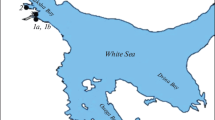Abstract
THE only information concerning the primary sox ratio of birds, based on acceptable criteria, is to be found in a publication by Hays which relates to Rhode Island Red fowl1. Hays's results give the sexes in the progenies of 39 hens which in the course of a ten-year period had shown 100 per cent fertility and 100 per cent hatchability of their eggs during the two-months hatching season of one of these years. The 39 hens in question had a total of 931 offspring : 61 chicks were lost before the sex could be ascertained; among the remaining 870 chicks, 432 were males and 438 were females. These results clearly pointed to equality of the sexes as determined at fertilization. Yet, Hays suggested (see below), that significant differences may have existed between individual hens in the sex ratios of their offspring.
Similar content being viewed by others
References
Hays, F. A., Amer. Nat., 79, 184 (1945).
Coles, R., Emp. J. Exp. Agric., 24, 167 (1956).
Weir, J. A., J. Hered., 46, 277 (1955).
McWhirter, K. G., Nature, 178, 870 (1956).
Popiel, K., and Sikorowicz, Z., Pam. Inst. Zeotech. Polsce. 61 (1955).
Author information
Authors and Affiliations
Rights and permissions
About this article
Cite this article
LANDAUER, W. Primary Sex Ratio of Fowl. Nature 180, 1139–1140 (1957). https://doi.org/10.1038/1801139a0
Issue Date:
DOI: https://doi.org/10.1038/1801139a0
- Springer Nature Limited





